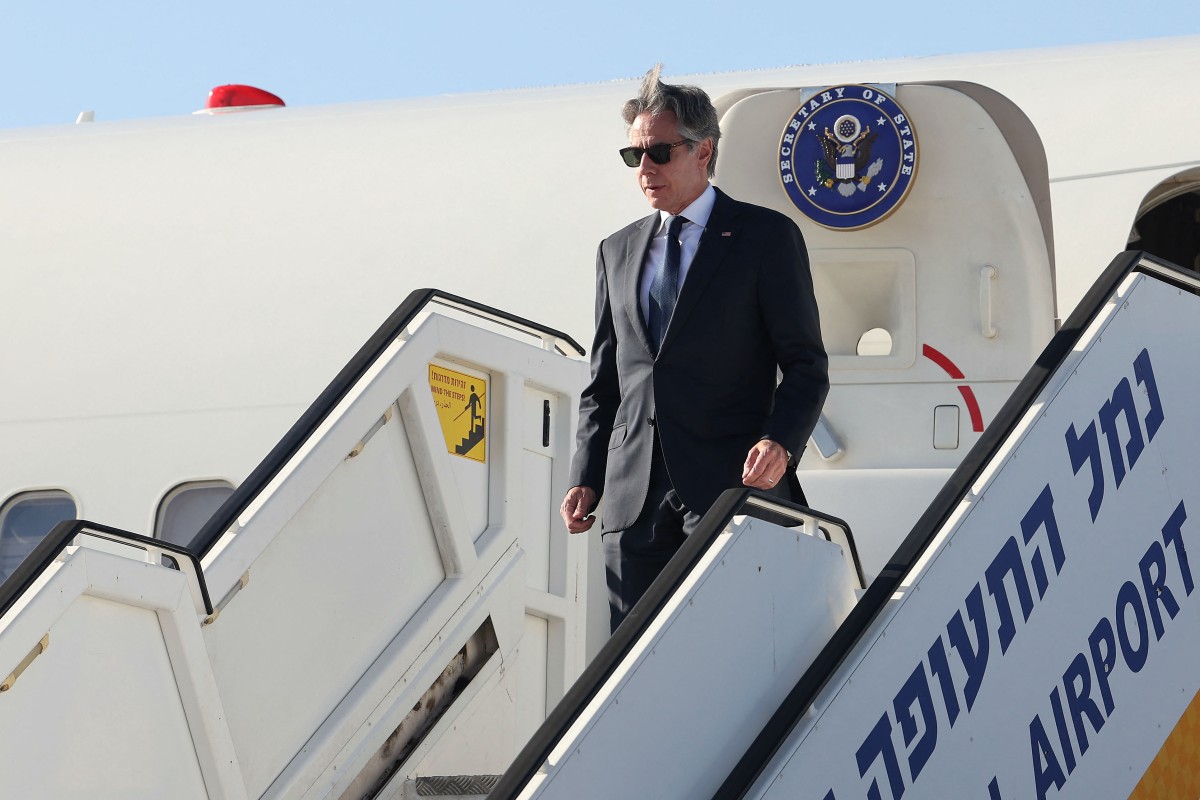US Secretary of State Antony Blinken will hold talks with key Israeli opposition figures on Tuesday, a day after he arrived in the country to push a ceasefire plan for the war in Gaza.
His visit is part of a drive by the United States to secure a ceasefire in the eight-month war between Israel and Palestinian militant group Hamas.
On Monday, the UN Security Council adopted a US-drafted resolution supporting a six-week ceasefire plan, under which Israel would withdraw from Gaza population centers and Hamas would free hostages taken during the October 7 attacks that triggered the war.
Blinken will on Tuesday meet Benny Gantz, a centrist and former army chief who quit Prime Minister Benjamin Netanyahu’s government on Sunday, in Tel Aviv, as well as opposition leader Yair Lapid.
The United States, a staunch ally of Israel, had been widely criticized for blocking several previous UN draft resolutions calling for a ceasefire.
US ambassador Linda Thomas-Greenfield said the Security Council had “voted for peace”.
“This Council sent a clear message to Hamas: accept the ceasefire deal on the table. Israel has already agreed to this deal and the fighting could stop today if Hamas would do the same,” she said after the UN session.
Hamas said Monday it “welcomes” the vote and reaffirmed its willingness to cooperate with mediators.
Palestinian President Mahmoud Abbas described the UN vote as a “step in the right direction”.
The United States has expressed hopes that Abbas’s Palestinian Authority, which is based in the West Bank and which has no authority over Gaza, will play a role in managing the territory in the future.
Road to calm?
After a stopover in Egypt, where he called on regional governments to “press Hamas to say yes” to the ceasefire proposal, Blinken met Netanyahu in Jerusalem on Monday.
On his eighth tour of the region since the start of the war, Blinken is also expected to stop in Jordan and Qatar.
The truce plan had initially been announced on May 31 by US President Joe Biden.
In Jerusalem, Blinken told Netanyahu it would “unlock the possibility of calm along Israel’s northern border and further integration with countries in the region”, according to the State Department.
Israeli forces and Iran-backed Hezbollah fighters in Lebanon have exchanged regular cross-border fire during Gaza’s war.
In the Gaza Strip, Israeli forces carried out fresh strikes early Tuesday, with hospital sources reporting several Palestinians killed in the centre of the territory.
The Israeli military said on Tuesday that four soldiers had been killed in fighting in southern Gaza the previous day, more than eight months into its war against Hamas militants.
The soldiers were “killed in fighting in south Gaza” on Monday, the military said in a statement, without elaborating on the circumstances of their deaths.
Earlier, witnesses in north and central Gaza reported helicopter gunfire and naval shelling hitting Gaza City, and air strikes on Deir al-Balah.
Street battles raged in the southern areas of Rafah and Khan Yunis, where bodies were seen lying in the streets and Palestinian civilians were fleeing, an AFP correspondent said.
In Jabaliya in northern Gaza, Soad Al-Qanou said her young child Amjad is suffering from malnutrition.
“This war has destroyed our lives and turned them upside down,” she told AFP.
“There is no food, no drink, there is siege and destruction everywhere.”








